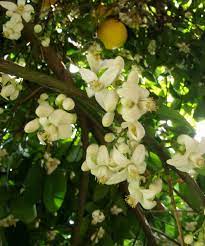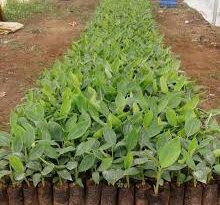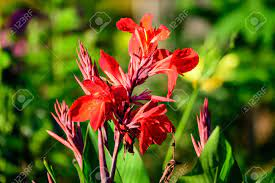Grapefruit Blossoms: Economic Importance, Uses and By-Products
Grapefruit blossoms refer to the fragrant flowers of the grapefruit tree (Citrus × paradisi). These blossoms are an essential part of the grapefruit tree’s reproductive process, as they contain the reproductive organs necessary for the tree to produce fruit. Grapefruit blossoms are typically small, white, and waxy. They have five petals and are quite fragrant, emitting a sweet and citrusy scent.
Grapefruit trees typically bloom in the spring, although the exact timing can vary depending on factors like climate and location. Like other citrus trees, grapefruit trees are usually pollinated by insects, especially bees. Pollinators help transfer pollen from the male parts (stamens) of the blossoms to the female parts (pistils), facilitating the fertilization process necessary for fruit development.
After successful pollination, the grapefruit blossoms give way to small, green fruit that gradually matures into the familiar grapefruit. The fruit grows from the ovary of the flower. While grapefruit blossoms themselves are not typically used in cooking or as an ingredient in recipes, the fruit that develops from these blossoms is highly prized for its tangy and refreshing flavor. Grapefruit juice, segments, and zest are commonly used in various culinary applications, from breakfast dishes to desserts and cocktails.
Grapefruit blossoms are known for their pleasant fragrance, and their aesthetic appeal makes them a popular choice in ornamental landscaping. Some people even use grapefruit blossoms to make perfumes or scented candles.
It is worth noting that grapefruit trees, like other citrus trees, are susceptible to various diseases and pests, so proper care and maintenance are essential to ensure healthy blossoms and fruit production. Additionally, the availability of grapefruit blossoms may vary depending on your geographic location and the specific grapefruit variety being grown.
The Economic Importance and Uses of Grapefruit Blossoms

Grapefruits blossoms, like those of many other citrus fruits, have several economic importance and uses. While they are not as well-known as the fruit itself, they play a significant role in various industries and applications.
Here are some of the economic importance and uses of grapefruit blossoms:
1. Pollination: Grapefruits blossoms serve as a source of nectar and pollen for bees and other pollinators. Effective pollination is essential for fruit production in grapefruit orchards. Healthy grapefruit blossom populations help ensure a successful fruit harvest.
2. Honey Production: Bees that forage on grapefruit blossoms produce honey with a distinctive flavor and aroma. Grapefruit blossom honey is sought after by consumers and is often considered a premium variety due to its unique taste.
3. Fragrance and Perfume Production: The essential oils extracted from grapefruit blossoms are used in the fragrance and perfume industry. The blossoms contribute their citrusy, floral, and slightly bitter scent to various perfumes and scented products.
4. Culinary Uses: Some culinary enthusiasts use grapefruit blossoms to infuse flavor into dishes and beverages. They can be added to salads, teas, or used as a garnish to impart a citrusy aroma and a subtle floral taste.
5. Aromatherapy and Essential Oils: Grapefruits blossom essential oil is used in aromatherapy for its uplifting and stress-relieving properties. It can be added to diffusers, massage oils, and bath products to promote relaxation and improve mood.
6. Medicinal Uses: Traditional medicine systems, such as herbalism, have employed grapefruit blossoms for their potential health benefits. They are believed to have properties that aid digestion and may have mild sedative effects.
Read Also: Grapefruit Leaves: Economic Importance, Uses and By-Products
7. Beverage Flavoring: Extracts or infusions of grapefruit blossoms can be used to flavor a variety of beverages, including cocktails, herbal teas, and even water. The subtle citrus and floral notes can enhance the taste of drinks.
8. Cosmetics: Grapefruit blossom extracts and oils are used in the cosmetics industry for their skin-nourishing and aromatic properties. They can be found in skincare products, including lotions, creams, and soaps.
9. Botanical Gardens and Landscaping: Grapefruit blossoms, with their attractive appearance and pleasant fragrance, are sometimes used in botanical gardens and landscaping to enhance the visual appeal of public spaces and gardens.
10. Research and Breeding: Grapefruit blossoms are important for researchers and breeders working on citrus varieties. Studying the genetics and characteristics of grapefruit blossoms can lead to the development of improved grapefruit varieties with desirable traits.
11. Aesthetic and Decorative Uses: Grapefruits blossoms are occasionally used in floral arrangements and decorations due to their lovely appearance and fragrance.
The Products and By-products That Can Be Derived From Grapefruit Blossoms
Grapefruit blossoms, the fragrant flowers of the grapefruit tree, offer a range of products and by-products, although they are not as commonly utilized as the fruit itself.
Here are some products and by-products that can be derived from grapefruit blossoms:
1. Essential Oil: Grapefruit blossom essential oil is extracted from the petals and has a sweet, citrusy aroma. It is used in aromatherapy, perfumery, and in the production of scented candles and soaps.
2. Perfumes and Fragrances: The pleasant scent of grapefruit blossoms is used in the formulation of perfumes and fragrances, adding a fresh, citrusy note to various personal care products.
3. Floral Water (Hydrosol): Hydrosols are produced during the steam distillation of grapefruit blossoms to extract essential oil. They are used as natural fragrances, toners, and facial mists.
4. Culinary Uses: In some cultures, grapefruit blossoms are used in cooking. The petals can be added to salads, desserts, and beverages to impart a subtle citrusy flavor and aroma.
5. Herbal Teas: Dried grapefruit blossom petals can be used to make herbal teas. They are often blended with other herbs or used on their own for a mild, citrus-infused tea.
6. Potpourri: Grapefruits blossom petals can be dried and added to potpourri mixes or sachets to provide a fresh and aromatic touch to indoor spaces.
7. Natural Dyes: The pigments in grapefruits blossoms can be used as natural dyes for fabrics and craft projects, producing shades of yellow and green.
Read Also: 6 Medicinal Health Benefits Of Geranium macrorrhizum (Bigroot Geranium)
8. Bee Forage: Grapefruits blossoms provide nectar and pollen for bees and other pollinators, supporting local honey production and biodiversity in the area.
9. Herbal Remedies: In traditional medicine, grapefruit blossoms have been used for their potential health benefits, including as a mild sedative and digestive aid, although scientific evidence supporting these claims is limited.
10. Compost Material: If not utilized for any of the above purposes, spent grapefruit blossoms can be composted to enrich the soil with organic matter.
In conclusion, it is important to note that while these products and by-products can be derived from grapefruit blossoms, the scale of production is relatively small compared to the fruit itself. Additionally, the use of grapefruit blossoms for culinary and medicinal purposes should be approached with caution, as some individuals may be sensitive or allergic to certain plant materials. Always consult reliable sources and experts when using plants for medicinal purposes.
Read Also: How to Graft an Avocado Tree to Produce Avocado Fruit









